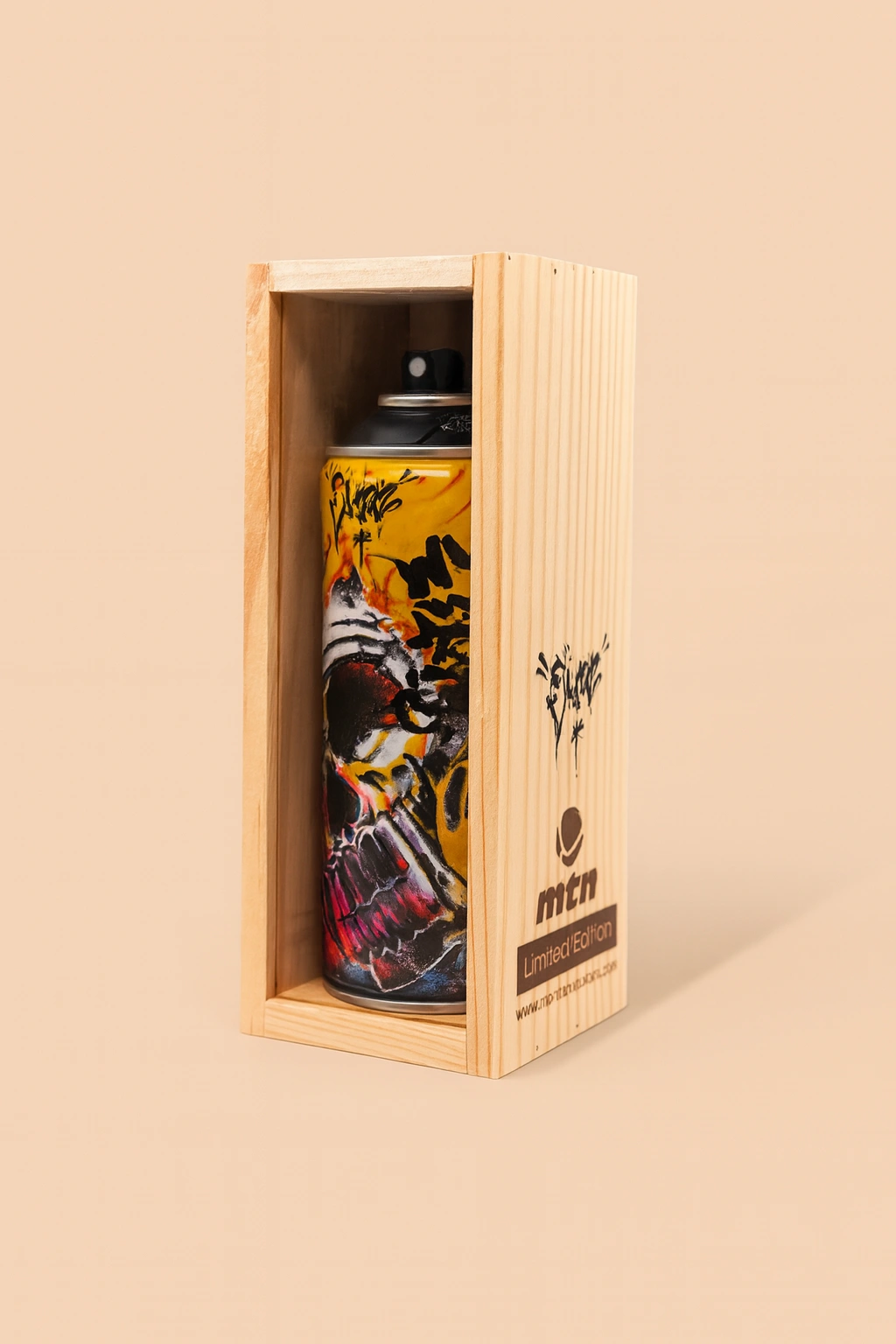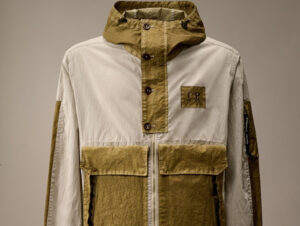An Editorial Reflection on Craft, Subversion, and the Art of Imperfection
In an era when fashion increasingly teeters between hyper-polished digital fabrication and fast-fashion disposability, Gallery Dept. offers a rare, breathing alternative—a devotion to imperfection, authenticity, and the cultural memory of clothing. Their latest piece, simply yet provocatively named the SEXY SKIRT, continues this tradition, embodying a philosophy that is equal parts rebellious and romantic.
At first glance, the SEXY SKIRT is straightforward: a denim mini skirt with a raw, uneven hem, traditional 5-pocket styling, and contrasting denim patches. Yet within its seemingly simple construction lies a manifesto—a bold insistence that fashion can still hold a handmade soul, that garments can bear the marks of their making, and that beauty can emerge most forcefully through the deliberate rejection of perfection.
Gallery Dept.: The Cult of Creative Destruction
Founded by artist and designer Josué Thomas, Gallery Dept. was never meant to be just another clothing brand. It began as an experimental art project in Los Angeles, housed within a working studio where clothes, paintings, and sculptures collided freely. The ethos was clear from the start: reimagine, rework, repurpose.
Gallery Dept.’s aesthetic hinges on visible labor—splattered paint, cut seams, frayed hems, unfinished edges. Each piece reads like a living document of the studio process rather than a sterile product of assembly lines. Their designs pay homage to the punk DIY spirit and vintage Americana, yet they transcend simple nostalgia, offering a pointed critique of modernity’s obsession with sleekness.
The SEXY SKIRT emerges directly from this lineage. It is an object that both participates in and pushes forward the brand’s core mission: to challenge the very notion of what constitutes “finished” or “fashionable.”
Anatomy of the SEXY SKIRT: Every Fray Tells a Story
Uneven Raw Hem
The skirt’s defining visual feature—the ragged, asymmetrical hem—feels almost dangerous in its casual defiance. Where fast fashion seeks uniformity, the SEXY SKIRT embraces variability. No two hems are quite the same, and that unpredictability grants the garment a rebellious energy.
The raw cut edge suggests urgency, as if the wearer seized a pair of scissors in a moment of creative fury. It evokes the spirit of customization, the teenage urge to slash jeans into something uniquely personal—a reminder that clothing can be an act of self-authorship, not mere consumption.
Contrasting Denim Details
The contrasting denim patches stitched along the body add further layers of meaning. Each swatch of fabric serves both a functional and symbolic purpose. Functionally, they reinforce stress points; symbolically, they reference the history of mending as an act of resilience.
In a culture that prizes the new and discards the worn, Gallery Dept. reasserts the value of repair—not as a compromise but as a creative intervention. The patches are not hidden; they are highlighted. They do not apologize for imperfection; they celebrate it.
5-Pocket Styling
Rooted in the classic American workwear blueprint, the 5-pocket construction connects the SEXY SKIRT to a long lineage of denim’s democratic appeal—from miners and railroad workers to 1950s youth subcultures and 1990s grunge.
Gallery Dept. doesn’t redesign the pocket; they honor it, preserving the garment’s functional genealogy while inserting their own disruptive signature elsewhere.
The Sexual Politics of the Mini Skirt: Then and Now
To name the garment SEXY SKIRT is to step consciously into a charged cultural conversation. Since its rise in the 1960s, the mini skirt has oscillated between symbolizing liberation and inviting controversy.
For Mary Quant’s London, the mini skirt was a joyful revolution—young women seizing autonomy over their bodies and appearances. For later decades, it became a battleground for debates about objectification, agency, and respectability.
Gallery Dept.’s SEXY SKIRT winks at this legacy but refuses to sentimentalize it. Its rawness strips away the commercial polish often applied to “sexy” fashion. This is not the slick, airbrushed sexiness of a mall window display. It is rough-edged, complicated, alive.
In the context of 2025’s evolving conversations around gender, identity, and power, the SEXY SKIRT feels pointedly subversive: it invites the wearer to define their own relationship to “sexiness,” on their own terms, in their own skin, without permission or apology.
Fashioning Individuality in an Algorithmic Age
Today’s consumer landscape is increasingly algorithm-driven. We are offered hyper-personalized suggestions based on aggregated preferences; we are taught to optimize our appearance according to trend cycles measured in microseconds.
In such an environment, the SEXY SKIRT reads as a deliberate act of resistance. It is irregular. It is unpredictable. It is stubbornly unoptimized.
Each frayed hemline resists categorization. Each contrasting patch disrupts homogeneity. The wearer is not merely purchasing a look; they are inhabiting an attitude, one that asserts:
“I am not an algorithmic output. I am not a demographic profile. I am a work in progress—and proud of it.”
Celebrity Endorsements and Street Credibility
Part of Gallery Dept.’s magnetic appeal stems from its organic adoption by cultural arbiters across music, art, and film. Stars like Kendrick Lamar, LeBron James, Kanye West, and Kendall Jenner have all been spotted in the label’s pieces.
It’s easy to imagine the SEXY SKIRT making its way into the hands—and onto the bodies—of similarly boundary-pushing figures: indie musicians, avant-garde models, underground artists. People who understand that clothes are not costumes but conduits—for attitude, for spirit, for dissent.
Unlike the flash-in-the-pan brands whose lifecycles burn brightly and fade fast, Gallery Dept. cultivates a slow, organic relationship with culture. The SEXY SKIRT, much like its other offerings, is built not just for the season but for the scene.
The Sustainability Argument: Rawness as Reclamation
There is an unexpected sustainability dimension to Gallery Dept.’s approach, subtly but powerfully embedded in pieces like the SEXY SKIRT.
In an industry plagued by overproduction, waste, and environmental degradation, Gallery Dept. practices an ethos of reclamation. By using vintage denim, by valuing repair over replacement, by refusing the logic of planned obsolescence, they offer a radically different model of fashion production.
The SEXY SKIRT, with its patches and imperfections, stands as an artifact of conservation. It says that newness is not inherently superior—that history can be stylish, and imperfection can be intentional.
Impression
The SEXY SKIRT from Gallery Dept. is not just an article of clothing. It is a challenge, a question, and a celebration.
It challenges the sterile perfectionism of modern fashion.
It questions the rigid binaries of sexy/not sexy, finished/unfinished, new/old.
It celebrates the beauty of process, of individuality, of human hands shaping human garments.
At its core, the SEXY SKIRT is a reminder: we are all, at every moment, unfinished works of art—frayed, patched, evolving, and undeniably alive.
In a world obsessed with sleek surfaces and manufactured flow, Gallery Dept. offers an alternative vision—where the rough edges are not flaws but features, and where fashion’s highest calling is not to polish us into conformity, but to dress us as we truly are: wild, imperfect, and beautiful.
No comments yet.









